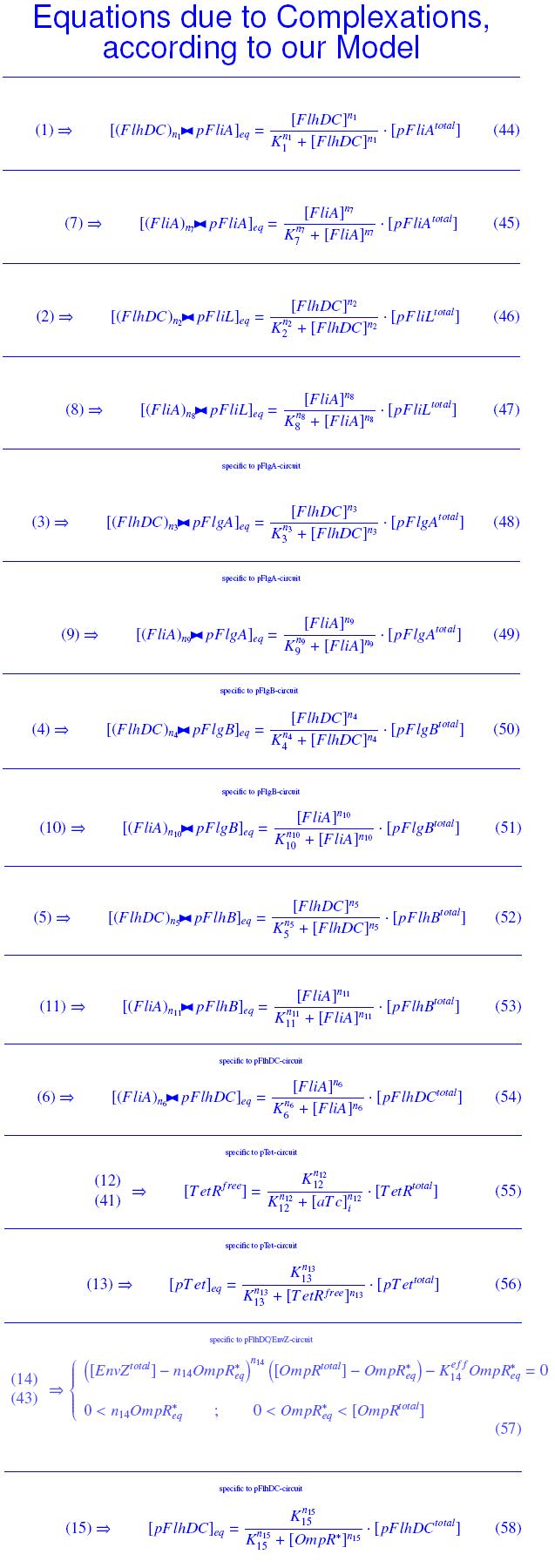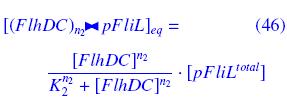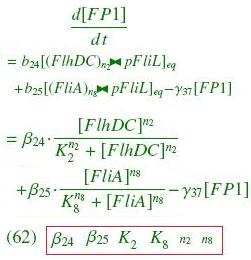Team:Paris/Modeling/FromMolReactToNLOde
From 2008.igem.org
(→Mathematical Interpretation and Simulation of the Molecular Reactions) |
|||
| (4 intermediate revisions not shown) | |||
| Line 2: | Line 2: | ||
{{Paris/Header|From Molecular Reactions to Non-Linear ODEs}} | {{Paris/Header|From Molecular Reactions to Non-Linear ODEs}} | ||
| + | {{Paris/Section_contents_characterization}} | ||
== Idea and Assumptions == | == Idea and Assumptions == | ||
| Line 13: | Line 14: | ||
<div style="text-align: center"> | <div style="text-align: center"> | ||
| - | {{Paris/Toggle|all assumptions|Team:Paris/Modeling/More_From2Ode_Explanation}} | + | {{Paris/Toggle|all assumptions|Team:Paris/Modeling/More_From2Ode_Explanation|250px}} |
</div> | </div> | ||
| Line 24: | Line 25: | ||
<div style="text-align: center"> | <div style="text-align: center"> | ||
| - | {{Paris/Toggle|developments|Team:Paris/Modeling/More_From2Ode_M}} | + | {{Paris/Toggle|developments|Team:Paris/Modeling/More_From2Ode_M|250px}} |
</div> | </div> | ||
| Line 38: | Line 39: | ||
<div style="text-align: center"> | <div style="text-align: center"> | ||
| - | {{Paris/ | + | {{Paris/Toggle2|Complexation Steady-State|Team:Paris/Modeling/Compl_SS}} |
</div> | </div> | ||
| Line 56: | Line 57: | ||
<div style="text-align: center"> | <div style="text-align: center"> | ||
| - | {{Paris/ | + | {{Paris/Toggle2|ODEs of the Global System|Team:Paris/Modeling/ODEs}} |
</div> | </div> | ||
| Line 71: | Line 72: | ||
<br> | <br> | ||
| - | + | {{Paris/Navig|Team:Paris/Modeling/Workflow_Example}} | |
| - | + | ||
| - | + | ||
Latest revision as of 03:39, 30 October 2008
|
From Molecular Reactions to Non-Linear ODEs
Other pages:
Idea and AssumptionsWe will here propose a Mathematical Modeling of the elementary molecular reactions. The idea of the Characterization Approach is that this modelization must both accounts for every small steps of the system and allow the experimental characterizations.
Therefore, the following equations do not describe properly what really happens in the cells. For exemple, we know that the transcription factor FlhD-FlhC is actually an hexamere FlhD4C2. But, as we will surely not get access to the dissociation constant of the hexamerisation, we just treat it as an abstract inducer protein "FlhDC", with an order (n) in its complexation caracterization probably around 2*4 = 8 (but perhaps completly different ! ; the estimation of the error by the Parameters Finder Programs would tell us if it stays consistent). ↓ all assumptions ↑
Mathematical Interpretation and Simulation of the Molecular ReactionsFirst, we consider the complexation phenomenon. We show, under the quasi steady-state hypothesis, how it leads to Non-Linear interactions like "Hill functions". ↓ developments ↑
Then, we apply these results to the Molecular Reactions of our system. That gives all the theoretical calculation of the complexations, and finally, with the previous assumptions, we get the equations of the full system of ODEs. For complete PDF with all Reactions and Numbered References : complete list of reactions and equations
|
 "
"







